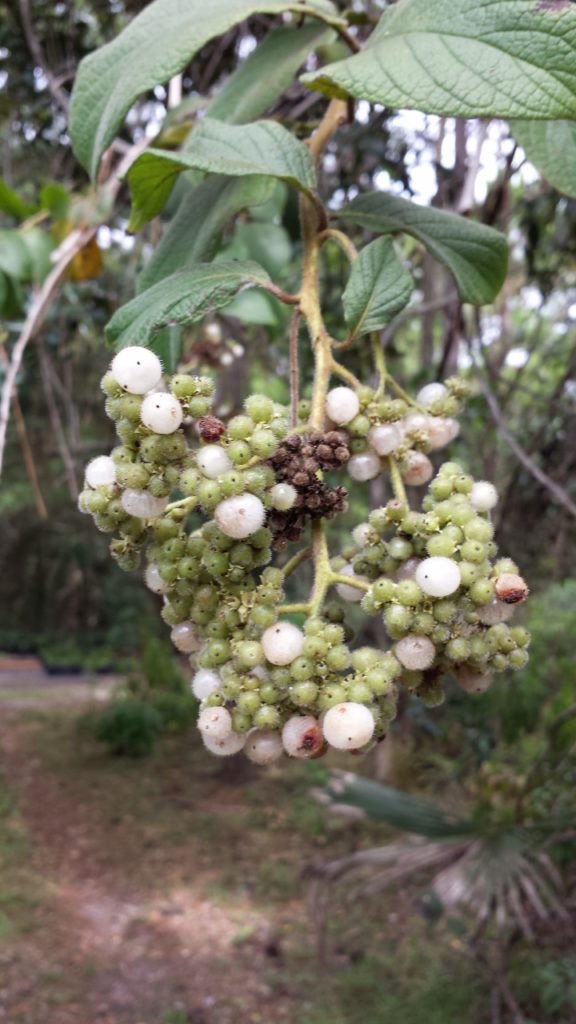
Florida Gooseberry
Tournefortia hirsutissima
This vine is known as Chiggery Grapes, but I refuse to use this horrifying name and have renamed it Florida Gooseberry. This is a long lived vine found primarily in Dade, Monroe, Collier and Hendry Counties. I have personally found it within the Fakahatchee Strand in Collier County. It will grow at least 30 feet up into a supporting tree and then cascade down.
In the spring, clusters of white flowers hang from the branch tips. These attract many butterflies and other insects. Clusters of clear white quarter inch berries follow which bring in many birds and squirrels. The plant is in the borage family which often contains alkaloids that male Queen and Soldier butterflies lap up from the flowers and rotting fruit and leaves to be converted into scents that attract their mates. These berries are not poisonous or tasty.
The leaves of Florida Gooseberry are oval with a blunt tip, about six inches long and hairy. The main stem may become three inches in diameter over time and can easily survive for many years. We have several on our property that are over 20 years old. Few seedlings come up on there own and the plant does not sucker. It is not salt tolerant, but very drought tolerant and generally takes care of itself after just a few initial waterings when first planted.
On our property, it is planted next to a Live Oak along with a Multiflora Passionvine. Both have grown 30 feet up the tree and cascade down to form a carpet of larval food and nectar for Zebra Longwings and Julia butterflies. This mass has persisted for twenty years so far. It is “Alive” with insects, birds and squirrels most of the year but especially in the spring.
If you decide to plant this on a fence, you will need to cut it back every few months to keep it in bounds. It mixes well with Multiflora Passionvine, Corky Passionvine, Jacquemontia, Native Allamanda and Coral Honeysuckle.
Years from now, I want to be remembered as the person who changed the name of this wonderful plant.